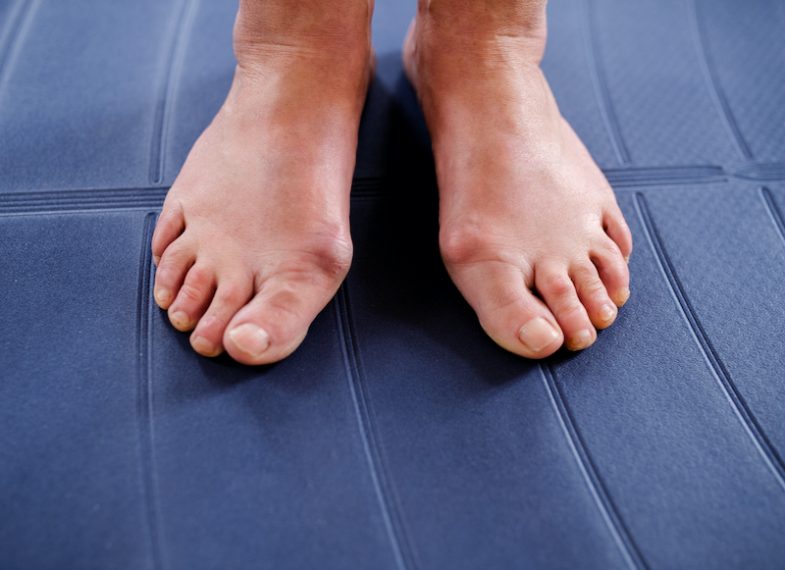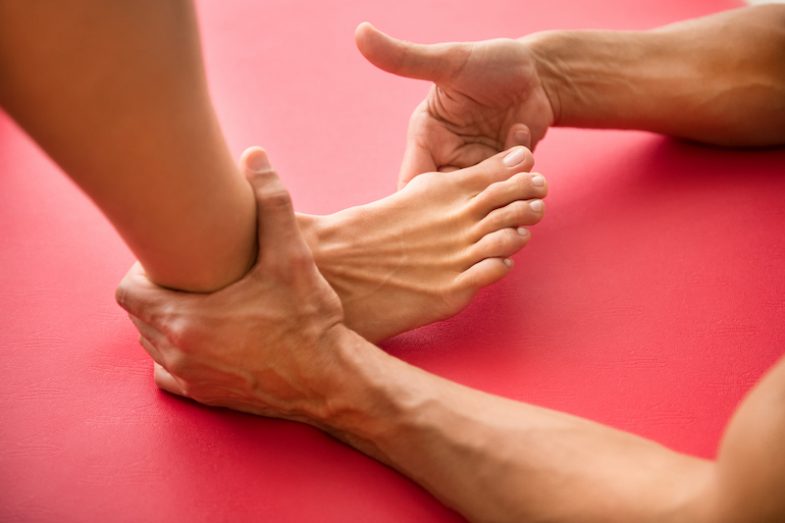Do you have painful bunions? Midwest Orthopaedic Consultants delivers affordable, quality, and convenient bunion correction surgery. Foot injury treatment is one of our specialties. Schedule a bunionectomy with us today and get back on your feet—pain-free!
What Is a Bunion?
A bunion is a bony bump on the side of the big toe. The bump grows on the outside edge of the foot. You can see a bunion at the joint where the toe meets the foot.

What Is Bunion Surgery?
A bunionectomy corrects bunions. There are several types of surgery available. Bunion correction surgery involves repositioning the big toe to relieve pain and improve function.
The surgeons at Midwest Orthopaedic Consultants have decades of experience with bunionectomies.
What Are the Types of Bunion Surgery?
The most common type of bunionectomy is an osteotomy. Other types of bunion surgery include an exostectomy and arthrodesis joint fusion.
Osteotomy
This is the most commonly performed procedure for bunion correction. In an osteotomy, the surgeon makes a few small incisions in the bones. Then, they’ll use screws or pins to realign the joint of the big toe.
Exostectomy
An exostectomy involves shaving off the bunion. This procedure is only effective in very minor bunions, so it is not often performed. However, an exostectomy may be combined with an osteotomy to reposition the toe.
Arthrodesis
If arthritis inflammation caused your severe bunion, arthrodesis joint fusion could be an effective option for your bunionectomy. In this procedure, the surgeon removes any parts of the big toe joint that have arthritis. Then, they’ll place screws in the toe to hold the bones together while they heal.
Do You Need a Bunionectomy?

If your bunion is painful or makes walking difficult, you may be a good candidate for bunion correction surgery.
If you have any of the following symptoms, schedule a bunionectomy with Midwest Orthopaedic Consultants today.
- Your big toe drifts toward the smaller toes.
- You have a stiff big toe.
- Pain in your toes interferes with your daily activities.
- You have persistent swelling and inflammation in your big toe.
Don’t let painful bunions hold you back! Contact MOC about bunion correction surgery today.
What Happens Before, During, and After Bunion Correction Surgery?
If you are a candidate for bunion correction surgery, the team at Midwest Orthopaedic Consultants will take care of you during the entire process. When it comes to providing care before, during, and after orthopedic surgery, we take the same comprehensive approach that drives the rest of our treatment.
Here’s what you can expect before, during, and after your bunionectomy.
Before Your Bunionectomy
Before surgery, you and your surgeon will discuss your health, activity levels, and other factors that could affect your recovery. This information will help the surgeon choose the best type of bunion surgery for you.
During Your Bunionectomy
During surgery, you will receive local anesthesia that numbs the area around the toe. Additionally, you’ll receive light monitored anesthesia.
Your surgeon will make a small incision along your big toe joint. Then, they’ll reposition your big toe and realign the tendons and ligaments around your toe joint.
The surgeon will set your toe in place using metal plates, small screws, and wire. Once that is done, they’ll place stitches and bandages on your toe to help the healing process.
After Your Bunionectomy
Bunion correction surgery is an outpatient procedure, so you can return home the same day.
During your recovery at home, you should:
- Avoid putting weight on your big toe.
- Elevate your foot to reduce swelling.
- Keep your wound and bandages dry.
- Take your pain medication as prescribed.
After surgery, most people can resume their normal activities in 6 to 12 weeks.
What Is the Recovery Time for Bunion Surgery?

Typically, your stitches will be removed two weeks after surgery. However, it can take 6 to 12 weeks for your bones to heal. During this time, you will most likely wear a protective shoe or boot.
During recovery, you’ll need to avoid putting weight on your foot. You can use crutches, a scooter, or a walker to help you move comfortably.
After 6 to 12 weeks, you will start to regain foot function. Physical therapy exercises can improve your foot’s strength and range of motion. While you can resume activities after approximately 3 months, the swelling may last for 6 to 9 months after surgery.
Be sure to follow up with your healthcare provider after surgery to ensure that your foot heals properly.
Prevent Bunions From Returning
After a bunionectomy, you should take steps to prevent bunions from returning. Here are a few tips for keeping bunions at bay.
- Avoid wearing tight-fitting shoes.
- Use orthotic devices, especially if you have flat feet.
- Stretch to loosen your calf muscles.
Advantages of Bunion Correction Surgery
Bunion correction surgery often provides significant pain relief after recovery. A bunionectomy can also improve big toe alignment and help you walk easily.
Possible Risks of Bunion Correction Surgery
As with any surgery, there are possible risks associated with a bunionectomy.
- The bunion may come back.
- Ongoing pain or stiffness.
- Infection or inflammation.
- Damage to the nerves.
- Problems with the wound healing properly.
Prior to surgery, your doctor will discuss the risks of bunion surgery with you. The complications of bunion surgery are rare and usually easy to treat.
Bunion Correction Surgery From MOC
Midwest Orthopaedic Consultants in Chicago can help you get back on your feet. Our skilled and experienced team can help you get back on your feet in no time. Schedule a bunionectomy with us today to relieve pain and improve your foot function.
